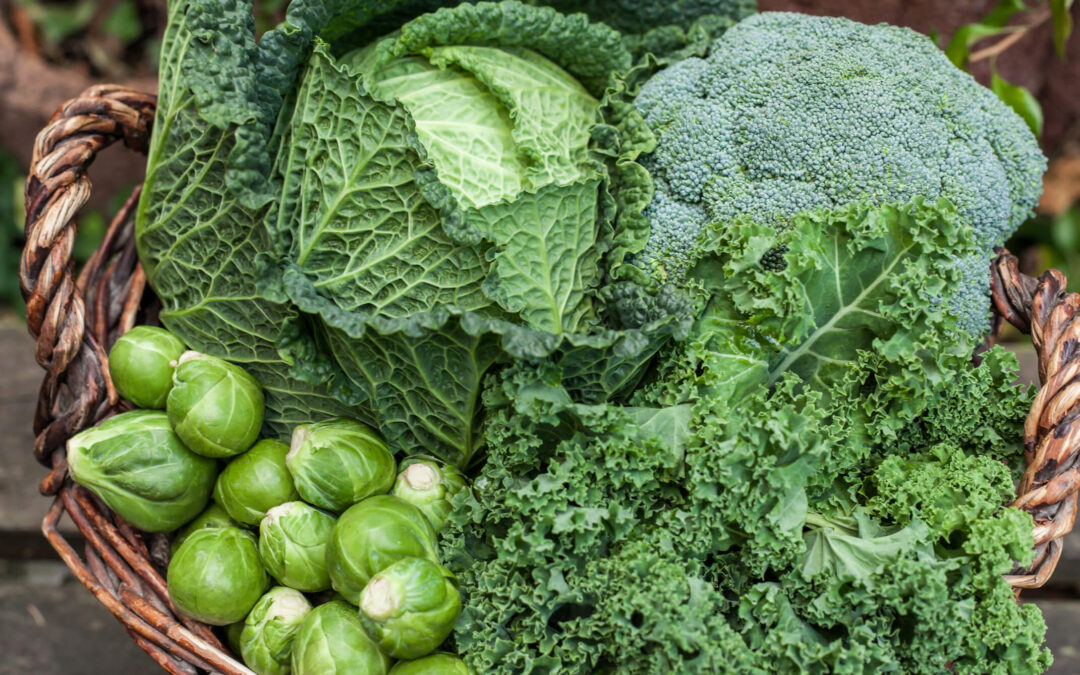Vegetables always taste best when you’ve grown them yourself. Plus, having a backyard garden gives you the freedom to nurture plants using healthy methods. This means you won’t have to worry about exposing yourself and your family to harmful fertilizers and pesticides that are often used to grow store bought veggies. Furthermore, you can choose to grow heirloom varieties in case you want to avoid eating genetically modified foods.
Enjoy the mouthwatering flavor and healthy benefit of homegrown produce—minus the stress!
The following veggies will flourish in Central Florida backyards with minimal sweat and tears.
Broccoli is simple to grow and requires very little effort. It only needs 1 to 1.5 inches of water per week until harvest, which is between 80 and 100 days.
A member of the cruciferous family, broccoli is one of the healthiest vegetables you can eat because it’s packed with nutrients. It’s a valuable source of fiber and protein, and contains iron, potassium, calcium, selenium, and magnesium. It also provides vitamins A, C, E, and K.
A cool-season crop, broccoli can germinate in soil temperatures as low as 40℉, which is why January is the perfect time to plant broccoli seeds in your Central Florida garden. Just be sure to plant them 12 to 24 inches apart. Broccoli transplants can be grown from mid-August through mid-March, but no later because hot temperatures will cause them to bolt.
It doesn’t matter if you’re growing this delicious veggie from seed or transplants, just make sure they are planted in an area that gets at least 4 to 6 hours of direct sunlight. Keep in mind that frosts will kill broccoli plants, so protect yours if weather reports predict a deep freeze.
‘Waltham 29’ is rumored to be the most Florida friendly variety of broccoli. However, ‘Green Goliath’ and ‘Green Duke’ are two heat tolerant varieties, which makes them ideal specimens for Central Florida backyard gardens.
Cabbage is another vegetable that’s simple to grow in Central Florida. Like broccoli, it also needs 1 to 1.5 inches of water per week. Traditional cabbage can be harvested 85 to 110 days after germinating, and 70 to 90 days if cultivated through transplanting. If using transplants, buy clean plants to avoid cabbage black rot disease.
Cabbage is in the same family as broccoli, Brussels sprouts, cauliflower, and collards, so it’s super nutritious. An excellent source of vitamins C, it also contains valuable vitamin K and dietary fiber.
Cabbage is a hardy cold weather crop, which is why it’s a St. Patrick’s Day staple. It can be planted in Central Florida from September through February in rows 24 inches apart, with 9 to 16 inches between plants. Cabbage needs plenty of sun to thrive and must be protected from frost.
It’s important to irrigate your cabbage crop in the early morning, so the sun can dry the leaves during the daytime to prevent fungal growth. Remember, it’s always a good idea to check your irrigation system every so often to make sure it’s working properly. If you’re not sure your system is running like it should, call us or complete our request service form and we’ll be happy to take a look.
Check for caterpillars often. The larvae of the cabbage white butterfly enjoy chowing down on cabbage just as much as you do!
Collards love Central Florida gardens! Easy to grow, they only need 80 days to mature and only need 1 to 1.5 inches of water per week.
Collard greens are an extremely healthy food as they are rich in vitamins A, C, K, and B-6. They are also a good source of calcium, iron, and magnesium.
Collards are simple to grow from seed but can also be grown from transplants. While you can plant collard greens year-round in Florida, they thrive in cooler temperatures. Ideally, the best time to plant collards in Central Florida is from the beginning of September through the end of February. Just protect them from frost same as you would for broccoli and cabbage.
Collards need lots of room to grow. It’s recommended that they be spaced 36 inches apart. Considering how sandy Florida soil is, it helps to mix in cow manure prior to planting, then apply mulch to the area after planting to keep the soil moist and rich in organic matter.
While collard greens are one of the easiest veggies to grow in Central Florida, check regularly for pests such as aphids, caterpillars, and whiteflies. They are also susceptible to diseases such as Alternaria Leaf Spot, downy mildew, and black rot. These diseases are usually caused by overwatering. To prevent this from happening, set your irrigation system to run during the early morning hours.
Enjoy the simplicity of a backyard garden!
Growing broccoli, cabbage, and collards in your Central Florida backyard garden is so easy and rewarding. Once it’s time to harvest, prepare them to your liking to relish their wonderful flavors and healthy benefits.
Remember, if you ever need assistance with sprinkler repair or irrigation in the Orlando area, we’re here to help!

